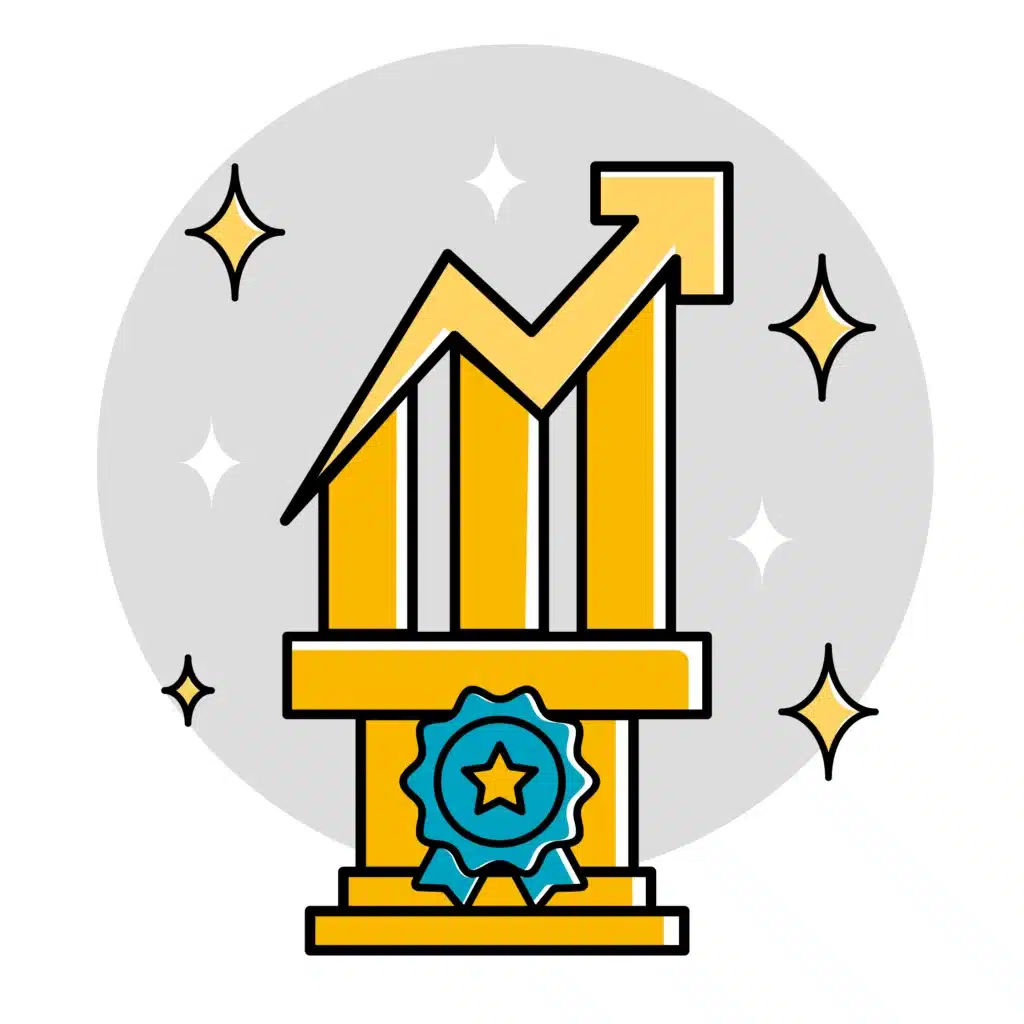4 Ways to Keep Your Team on Target

Leading a credit union can be like herding cats, especially when it comes to keeping your team focused on those big, audacious goals. You see the future clearly, but your team? They might be distracted by the latest email ping or debating whether it’s time for a second cup of coffee (spoiler: it always is). So, how do you keep everyone moving toward that lofty vision for the next year without getting lost in the details of daily distractions? Let’s talk about keeping your team on target in a way that doesn’t involve GPS tracking or wishful thinking. 1) Make the Goal Obvious You know that old saying, “out of sight, out of mind.” Well, that applies to your goals too. If your team can’t see the destination, they’re bound to meander. Your job is to make the goal so visible it’s impossible to ignore. Think Times Square billboard levels of obvious. Post your objectives everywhere—meeting agendas, office messenger channels, even the breakroom fridge. The idea is when your team is on their daily grind, they still see the big picture and not just the latest fire that needs putting out. Keeping the finish line in front of them ensures they’re most likely running towards it. 2) Connect to the Why Here’s a little secret: People care a whole lot more when they understand why something matters. Sure, hitting the numbers is great, but what’s the point? Why does your goal matter to the credit union’s mission and to them? The more you remind your team how their work ties into that bigger vision, the more invested they’ll be and the more they’ll want to crush those targets. And let’s be honest: Who doesn’t want to feel like their efforts are contributing something meaningful, rather than just checking boxes? 3) Pivot Like a Pro Goals are great, but flexibility is vital. Sometimes, even with the best-laid plans, you need to pivot – and no, that doesn’t mean abandoning your goal. It means tweaking the game plan to deal with whatever curveballs are thrown your way. Encourage your team to embrace the pivot, not as a failure but as a strategic maneuver. When the path ahead changes (and it surely will), be ready to adapt. Whether that’s adjusting timelines, reallocating resources, or redefining success for a specific project, staying nimble is crucial to staying on target. 4) Cut the Noise and Focus Distractions are everywhere: social media, constant emails, the team member who thinks every question is urgent. If you want your team to stay on target, you must cut through that noise. Set boundaries. Make it clear that not every email needs an immediate response. Encourage time where people can focus without interruption. And for the love of all things productive, kill those pointless meetings! You already know which ones. Keeping your team on target doesn’t require superhuman effort, but it does require strategy. If you can nail these, you’re well on your way to not just surviving the year but thriving. Understanding the Fear Behind the Delay Procrastination isn’t about laziness – it’s about fear and discomfort. In this video, we’ll explore the real reasons behind procrastination, its effect on our well-being, and practical strategies to help you move forward with confidence.
Boring Credit Union Meetings? Top Tips to Transform Your Meetings

Ah, meetings. Those wonderful little interludes in your day that promise productivity but often deliver a painful mix of boredom and inefficiency. Statistics show that a whopping 32% of meetings are considered a waste of time, and 49% of employees admit to doing unrelated work during meetings. And let’s not even get started on the late arrivals and lack of clear next steps. But fear not! Here are the top 7 hacks to optimize meetings at your credit union. Hack #1: Set Clear Objectives Let’s start with the basics: Know what you want to achieve before the meeting starts. Nothing derails a meeting faster than a vague agenda. Distribute a detailed agenda beforehand and stick to it like glue. Clear objectives keep the meeting focused and ensure everyone knows why they’re there. Hack #2: Keep It Short & Sweet We get it, there’s a lot to discuss, but attention spans are short. Implement a strict time limit for each topic and don’t be afraid to cut off a conversation that’s going in circles. Short, time-bound meetings prevent rambling and maintain focus. Remember, if it can’t be said in 30 minutes, it probably needs a follow-up email. Hack #3: Designate Roles Assigning specific roles can make a huge difference. Have a timekeeper to keep things on track, a note-taker to record key points, and a facilitator to guide the discussion. Rotate these duties to keep everyone engaged and avoid the “usual suspects” syndrome, where only the same handful participate. This not only enhances accountability but also makes sure everyone gets involved. Hack #4: Encourage Active Participation Nothing kills a meeting faster than a lack of engagement. Encourage active participation by using interactive elements, like quick polls or brainstorming sessions. Pose questions, solicit opinions, and make sure every voice is heard. This increases engagement and generates diverse ideas, which can make the meeting more productive and less monotonous. And remember, a little humor and wit can go a long way in keeping things lively. Hack #5: Minimize Distractions Phones, laptops, and even that intriguing pen clicker can be major distractions. Implement a no-device rule during discussions, or – if using remote communications – set rules that reduce distractions. A focused environment boosts productivity and ensures everyone is mentally present. Note Well: Requiring those video commuting to have their cameras on adds accountability for being present! Hack #6: Summarize & Assign Action Items Meetings should end with clear next steps. Summarize the key points and assign specific tasks to individuals. Make sure everyone knows what they need to do and by when. This ensures clarity and follow-through, preventing those dreaded “wait, what are we supposed to do now?” moments. Hack #7: Solicit Feedback After the meeting, take a few minutes to gather feedback. Conduct quick, post-meeting surveys, or have a brief discussion on what went well and what could be improved. This helps refine your meeting processes and shows your team that their opinions matter, boosting morale and encouraging continuous improvement. Ready to Run a Highly Effective Meeting? Download our meeting template now to streamline your meetings and achieve great results!Effective Meeting Strategies: Dos and Don’ts for Productive Sessions
Time Titans: Unveiling Top Strategies for Mastering Your Minutes

For those in the back offices and on the frontlines of credit unions, time is often a precious commodity. The struggle to manage it is an ever-present challenge. Here’s the reality: There are only 168 hours in a week – a stark reminder that time is finite and demands careful consideration. The essence of time management lies in priority management. It’s not a matter of lacking time; it’s about what we prioritize. Let’s reflect on what truly matters and allocate time accordingly, so that we can master our minutes and conquer the chaos. Measure and ReflectA daily routine is a powerful tool for managing time effectively. Take a personal inventory of how you spend your time for at least a week (go two or more if you want to factor in more variables). You can create a timesheet on paper, use Excel or Google Sheets, or download a time-tracking software. Count the hours spent on different scheduled activities, and then ask yourself: Reflection is the compass that guides your journey toward mastering time. Create an Ideal Week Map out your days, allocating specific time blocks to essential tasks. Remember: Time is not managed, priorities are. By structuring your days with purpose, you take control of your schedule rather than letting it control you. Note well: An ideal week is a blueprint, not a rigid plan. Regularly evaluate where your time is spent – after the first two weeks, ninety days, six months, and one year. Adjust, refine, and celebrate the victories, no matter how small. Eliminate Time Wasters End Your Day by Preparing for the Next To prevent burnout, establish a shutdown ritual. Check your appointments and to-do list for tomorrow. Examine what happened today, including peaks and slumps in energy levels that impacted productivity. Rather than rushing out the credit union’s doors at closing, take 30 minutes every day to review your day and plan for the next. Your efficiency and focus will soar when you do. For credit unions, time can either be your greatest adversary or your best ally. The key takeaway is clear: To enhance productivity within your credit union, you must take the TIME to do so.
Embrace Excellence in Imperfection

What drives you to seek perfection? Perhaps it’s your boss setting lofty expectations. Maybe it’s a personal standard you’ve set for high levels of achievement. It could also be cultural norms or family values that have shaped your desire for flawlessness. In a study by the American Psychological Association, the “irrational desire to achieve more, along with being overly critical of oneself and others,” is on the rise. Between 1989 and 2016, the study found self-oriented perfectionism scores increased by 10%, socially prescribed increased by 33%, and other-oriented measures increased by 16%. Like every brittle New Year’s resolution, we often snap under the overwhelming pressure of perfection within our credit union. If we’re honest with ourselves, perfection is a subjective and often unattainable concept. What one considers perfect may differ from another’s, and the pursuit can lead to stress, anxiety, and a sense of inadequacy. Let’s change our mindset. Instead of striving for perfection, how can we achieve excellence in our credit union? In baseball, a season batting average of .300 or higher is excellent. As we look at our individual and team goals for the credit union, how can we raise our “batting average”? Focus on the Process, Not the Product The ultimate outcome is important, but how you get there – steps taken, lessons learned, and the moments lived – are just as crucial. How often do you find you didn’t serve the member well or an error occurred at the credit union because you didn’t follow the process? If the process is sound, you will always meet expectations. The most successful credit unions take a more proactive approach to reviewing their processes and strive to improve them. Note Well: Your members value authenticity over perfection. Fail Better The road to excellence is paved with a series of well-navigated failures. One of the greatest basketball players of all time, Michael Jordan, once said, “I’ve missed more than 9,000 shots in my career. I’ve lost almost 300 games. Twenty-six times, I’ve been trusted to take the game-winning shot and missed. I’ve failed over and over and over again in my life. And that is why I’m successful.” It’s important that you do not internalize failure or allow failure to push you toward avoiding future challenges or new opportunities. Also, be mindful of projecting negative emotions, such as blaming others or deflecting responsibility. Remember: Setbacks are not the reason to give up, but are challenges to overcome. Quiet the Inner Critic There’s often a self-sabotaging voice within us that can hinder our personal and professional growth. Take those limiting beliefs about yourself and others and change them into liberating truths. Instead of a mindset that is innate and unchangeable, replace it with a growth mindset. This includes embracing challenges, adapting to changes, believing effort is a path to mastery, learning from criticism, and celebrating efforts and not just outcomes. Jot this down: Time wasted on perfection is time lost in progress. In the pursuit of goals and excellence within your credit union, embrace the mantra that “done is better than perfect.” It serves as a gentle reminder that waiting for perfection can often lead to inaction. Not all tasks require perfection either. Every completed endeavor, no matter how imperfect, becomes a stepping stone toward growth and success.










